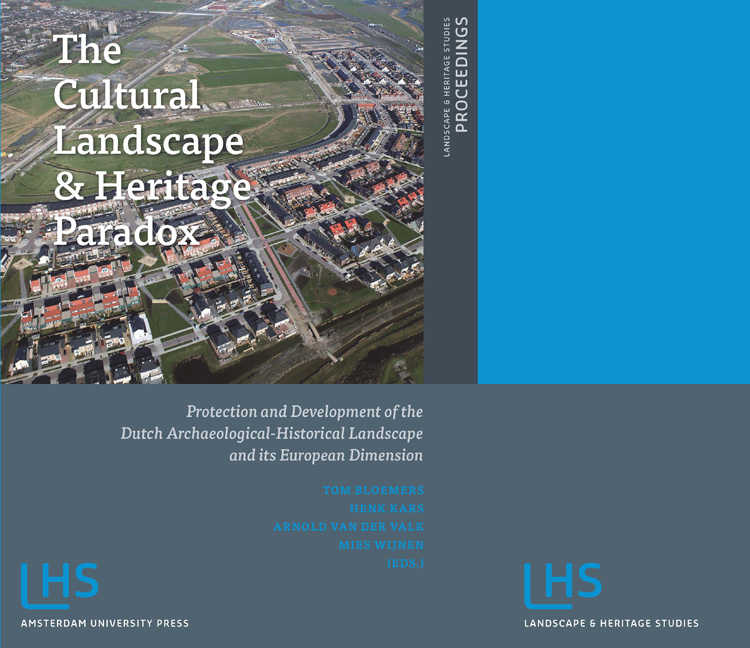 The Cultural Landscape and Heritage Paradox
The Cultural Landscape and Heritage Paradox Book contents
- Frontmatter
- Contents
- Preface
- I INTRODUCTION
- II INSIGHTS AND PROSPECTS OF ARCHAEOLOGICAL-HISTORICAL LANDSCAPE STUDIES
- III LINKING KNOWLEDGE AND ACTION
- IV IMAGINATION - FACTS AND CONSTRUCTIONS
- V SHARING KNOWLEDGE - STORIES, MAPS AND DESIGN
- VI SYNTHESIS AND CONCLUSIONS
- VII MANAGEMENT OF KNOWLEDGE
- VIII AGENDA FOR THE FUTURE
- IX SUMMARY
- X APPENDIX
- Subject Index
- Index of Places and Regions
5 - New Developments in Archaeological Predictive Modelling
Published online by Cambridge University Press: 21 January 2021
- Frontmatter
- Contents
- Preface
- I INTRODUCTION
- II INSIGHTS AND PROSPECTS OF ARCHAEOLOGICAL-HISTORICAL LANDSCAPE STUDIES
- III LINKING KNOWLEDGE AND ACTION
- IV IMAGINATION - FACTS AND CONSTRUCTIONS
- V SHARING KNOWLEDGE - STORIES, MAPS AND DESIGN
- VI SYNTHESIS AND CONCLUSIONS
- VII MANAGEMENT OF KNOWLEDGE
- VIII AGENDA FOR THE FUTURE
- IX SUMMARY
- X APPENDIX
- Subject Index
- Index of Places and Regions
Summary
ABSTRACT
In this paper the authors present an overview of their research on improving predictive modelling into true risk assessment tools. Predictive modelling as it is used in archaeological heritage management today is often considered to be a rather crude way of predicting the distribution of archaeological remains. This is partly because of its lack of consideration of archaeological theory but also because of a neglect of the effect of the quality of archaeological data sets on the models. Furthermore, it seems that more appropriate statistical methods are available for predictive modelling than are currently used. There is also the issue of quality control, a large number of predictive maps have been made but how do we know how good they are? The authors have experimented with two novel techniques that can include measures of uncertainty in the models and thus specify model quality in a more sophisticated way, namely Bayesian statistics and Dempster-Shafer modelling. The results of the experiments show that there is room for considerable improvement of current modelling practice but that this will come at a price because more investment is needed for model building and data analysis than is currently allowed for. It is however doubtful whether archaeological heritage management in the Netherlands will have a true need for this.
KEY WORDS
Predictive modelling; archaeological heritage management, expert judgement; uncertainty, statistics
INTRODUCTION
Predictive modelling is a technique that at a minimum tries to predict ‘the location of archaeological sites or materials in a region, based either on a sample of that region or on fundamental notions concerning human behaviour’ (Kohler/Parker 1986, 400). Predictive modelling departs from the assumption that the location of archaeological remains in the landscape is not random but is related to certain characteristics of the (natural) environment. The precise nature of these relations depends very much on the landscape characteristics involved and the use that prehistoric people may have had for these characteristics. In short, it is assumed that certain portions of the landscape were more attractive for human activity than others. If, for example, a society primarily relies on agricultural production it is reasonable to assume that the actual choice of settlement location is, among other things, determined by the availability of land suitable for agriculture.
- Type
- Chapter
- Information
- The Cultural Landscape and Heritage ParadoxProtection and Development of the Dutch Archaeological-Historical Landscape and its European Dimension, pp. 431 - 444Publisher: Amsterdam University PressPrint publication year: 2010
- 3
- Cited by


